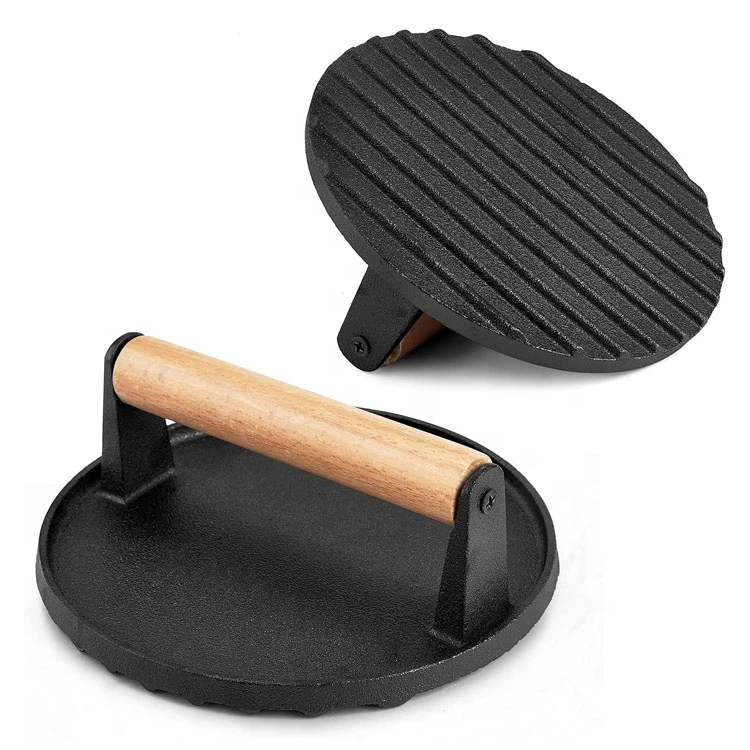
Versatile Cast Iron Saucier Pan for Perfect Cooking and Delicious Meals Every Time
The Versatility and Benefits of a Cast Iron Saucier Pan
In the realm of kitchen cookware, few items stand out quite like the cast iron saucier pan. Unlike traditional frying pans or saucepans, this unique piece of equipment is designed to offer both versatility and exceptional heat retention. For home cooks and professional chefs alike, a cast iron saucier pan provides a wealth of benefits that elevate the culinary experience.
The Design of the Saucier Pan
A cast iron saucier pan typically features a wider, rounded body and a tapered edge, which is specifically crafted for whisking and stirring. Unlike standard sauté pans with straight edges, the rounded interior allows sauces and other mixtures to blend effortlessly without getting stuck in corners. This design also promotes even heat distribution, which is essential for cooking sauces, risottos, and delicate dishes that require precise temperature control.
Heat Retention and Distribution
One of the defining characteristics of cast iron cookware is its ability to retain heat. When cooking with a cast iron saucier pan, you can expect consistent cooking temperatures, which are crucial when you are trying to achieve particular textures or reductions in sauces. This feature is especially beneficial for slow-cooking tasks, as the pan distributes heat evenly throughout the food, reducing the likelihood of hot spots that can burn ingredients.
Non-Stick Qualities
While cast iron pans are often associated with the need for seasoning, when properly maintained, they can possess non-stick qualities that rival modern non-stick cookware. The natural surface of seasoned cast iron creates a layer of polymerized oil, making it easier to cook sauces and delicate dishes without sticking. With regular use and care, a cast iron saucier pan can develop a seasoning that improves its performance over time, providing a naturally non-stick experience that many cooks cherish.
cast iron saucier pan

Cooking Methods and Versatility
The versatility of a cast iron saucier pan cannot be overstated. Whether you are searing meat, simmering sauces, or preparing hearty stews, this pan can handle it all. It is equally effective on the stovetop as it is in the oven, making it the ideal choice for recipes that transition from one heat source to another. For instance, you might start a dish on the stovetop to build flavor and then transfer the saucier pan to the oven to finish cooking, a technique that many chefs favor.
Additionally, the size and shape of the saucier pan make it perfect for preparing creamy risottos or custards, where constant stirring and a gentle heat are necessary. Its design allows food to move freely, promoting even cooking and preventing scorching. For those who enjoy making sauces from scratch, the saucier pan's rounded edges make deglazing easy and efficient, enabling you to incorporate all the flavorful bits left in the pan.
Care and Maintenance
Caring for a cast iron saucier pan is relatively straightforward, albeit slightly different from other cookware materials. Using hot water and a stiff brush is often enough to clean the pan without the need for soap, as soap can strip the seasoning. After cleaning, it’s essential to dry the pan thoroughly and lightly oil it to maintain the seasoning layer and prevent rust.
Conclusion
In conclusion, the cast iron saucier pan is an indispensable tool for any kitchen. Its elegant design, superior heat retention, and impressive versatility make it a favorite among those who love to cook. Whether you’re an amateur home cook or an experienced chef, investing in a high-quality cast iron saucier pan can significantly enhance your culinary creations. With proper care, this timeless piece of cookware can serve you well for years to come, making it a staple in both everyday and gourmet cooking. As you explore the myriad dishes that this pan can help create, you’ll likely find that it quickly becomes one of your most cherished kitchen companions.
-
Season Cast Iron Perfectly with GPT-4 Turbo TipsNewsAug.01,2025
-
High Quality Cast Iron Cookware - Baixiang County Zhongda MachineryNewsAug.01,2025
-
Premium Cast Iron Pan: Durable & Perfect HeatNewsAug.01,2025
-
High Quality Kitchen Durable Black Round Cast Iron Cookware Pancake Crepe Pan-Baixiang County Zhongda Machinery Manufacturing Co., Ltd.NewsAug.01,2025
-
Cast Iron Cookware - Baixiang County Zhongda Machinery | Nonstick, Heat ResistanceNewsAug.01,2025
-
High Quality Kitchen Durable Black Round Cast Iron Cookware - Baixiang County Zhongda Machinery | Non-Stick, Heat Retention, DurableNewsJul.31,2025


